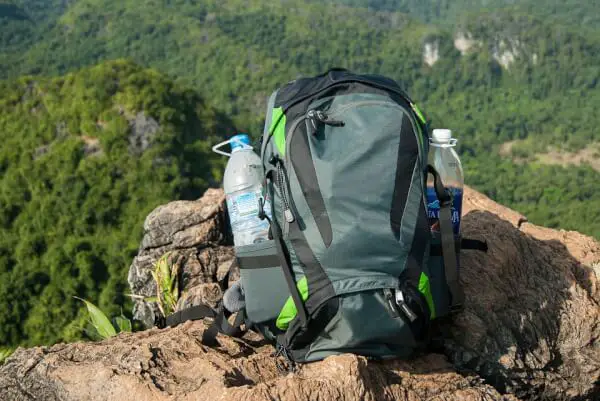If the opportunity comes to you, the decision of whether or not to hike the Appalachian Trail is difficult. It also certainly shouldn’t be a decision that is to be taken light. Especially if you’re considering staking everything and becoming one of the trails famed ‘thru-hikers’.
The Appalachian Trail is beautiful to say the least, but it’s also considered to be one of the toughest hikes in the world, and there’s a good reason for that. So if you want to learn how to hike the Appalachian Trail, successfully, then keep on reading.
See also: Best Hikes in Phoenix: Rise and Hike the Capitol of Arizona
The trail alone is the longest market trail in the world, covering a length of 2,190 trail miles. It’s easy to see why the trail is one of the most famous in the world, getting an average of 3 million visitors every single year. It even manages to cut across six completely different national park units, all with their own unique features.
On average it takes between 5 and 7 months to tackle the grueling thru-hike.
How Should You Prepare?
Preparation is important, and the key to a successful thru-hike. Preparing for it isn’t going to be the same as preparing for just a few days out in the wilderness. It’s going to put your body on a test like nothing that you’ve ever experienced.
To get ready for that test, you need to embark on training sessions in mountainous regions, ideally on sections of the Appalachian Trail itself. By training on the trail you will get a feel for the terrain that you will have to conquer to beat the hike.
Only 1 in 4 of the hikers that set out to complete a thru-hike actually manage to finish it, and without preparation you won’t find yourself among those winners. One of the key things is that you need to know your own limits, and the limits of your mind as well as your body.
You shouldn’t be headstrong and attempt to cover more than 8 miles a day at the start of your hike, that way your body can adjust to the terrain. If you push yourself too quickly, too fast, your body will begin to suffer the consequences of that decision. For a full day hike check list, read our article on this topic to be better prepared for the trip.
By spreading the hike out across the coming months, and planning for all of it, you can make sure that you’re always well-rested and ready to camp before the night hits. You don’t want to be stumbling around in the dark for a few extra miles, it will only equate to you covering less miles the next day. Meaning that you would have set yourself forward to only head backwards.
The Appalachian Trail
Most of the hikers who have successfully completed their thru-hike of the Appalachian Trail would consider it to be one of the toughest tests for hikers. It will test you physically, with steep inclines that make your muscles ache, as well as steep descents putting pressure directly onto your knees.
But, it will also test you mentally. You could find yourself lonely or homesick out in the wilderness that the hike offers. Remember that the first and last miles of any long hike are always the toughest, so give yourself some time to adjust to your surroundings during those initial miles.
By making sure that you’re in good physical shape you will avoid a lot of issues that could otherwise appear. But, one simple tip that some hikers forget is to make sure that your boots are broken in before you set out on the trail. As tempting as a new pair of hiking boots are we all know that breaking them in is always a painful affair. You should also be able to carry a full pack by yourself, without any assistance after covering a lot of miles. For useful guidelines on how to hike, check out our earlier article that tackled this topic.
You don’t have to worry about finding your way around while you’re on the trail, but you should make sure that you have a map and compass with you for planning. The majority of the trail is clearly marked by ‘blazes’, small white painted rectangles.
When the trail comes into conflict with another the other will be clearly marked by a separate colour. These marks are 2 x 6”, and they’re painted in spots that are hard to miss, prominent places such as trees, posts, and even rocks.
It’s advisable to hike from Georgia towards Maine. The most challenging mountain on the Appalachian Trail, Katahdin, is usually completed on the last day of the hike in Maine. By hiking from Maine to Georgia you would have to face the challenge of the mountain on your first day.
Maine is also known to be the most challenging state in terms of terrain on the entire route of the Appalachian Trail. Yet, some hikers swear by dealing with Katahdin and the terrains of Maine before venturing closer and closer towards Georgia.
By starting in Georgia you’ll find yourself traversing the beauty of the Chattahoochee National Park Forest. It offers most of the hikers on the trail the rugged wilderness hiking opportunity that they have set out looking for. It does get crowded in March and the start of April, mostly with other hikers attempting to complete their own thru-hike.
When Should You Tackle the Appalachian Trail?
The vast majority of thru-hikers that attempt to conquer the Appalachian Trail start somewhere between February and mid-April. The start of the trail, Springer Mountain, gets busier and busier the closer towards summer it gets.
All northbound thru-hikers are advised to set off early enough to reach Katahdin (the mountain at the opposite end of the trail) by no later than October 15th. Weather conditions on the mountain are known to change rapidly, and it can snow year round on the top of the mountain.
A lot of hikers have now started attempting to beat the crowds of thru-hikers who congregate on the northbound route. They’re attempting to do this by starting earlier in the year. While a lack of crowds sounds like a good idea in theory, it can prove to be their biggest hindrance. Many of those same hikers find that the weather conditions are worse than they expected, with snow and ice that can literally put a halt to their hike.
Flexibility is one of the essential factors in any thru-hike. Don’t set any of your plans in stone. You never know when pain could set in or when you might simply need a rest. Your body will be more exhausted than you might expect facing the mammoth of a challenge.
What Should You Pack?
When packing to face the Appalachian Trail you should pack in a way similar to the majority of long hikes. You should always make sure that you carry a map, compass and a watch. Make sure that you can use them too.
The trail is properly marked out, but you have to plan your own hike in advance. You should also use the watch for time keeping, especially in March when you’re working against shorter daylight hours.
For facing the night, you will need all of the usual essentials. A tent, or a tarp; as well as a sleeping pad thick enough to insulate you from the cold ground beneath your tent. You should take a thick enough sleeping bag to keep you warm during the night.
When you set out hiking, you should always make sure that you have at least 2-3 quarts of water per person, this is especially vital when you’re working with warmer weather conditions.
The hikers that face the Appalachian Trail frequently know that the weather conditions can quickly change dramatically, and it’s best to pack clothing suitable for the worst of conditions. Let yourself get excited and expect to face the best, but make sure that you pack for the opposite.
In your main pack, you’ll need a supply of food, and this has to include a number of high-energy snacks. Your energy will quickly deplete while you’re hiking in the mountains.
In your first aid kit, you’ll need to make sure that you have a lot of items for treating blisters, a pen and paper, and even a set of tweezers. The tweezers are necessary for removing ticks, but by making sure you pack insect repellent you can avoid the majority of ticks completely. See our tips on how to properly care for a blister to help you on your way.
In the emergency section of your pack, you will need a whistle. A whistle creates a clear and precise noise that will alert anyone in your proximity to any danger that you might be in. A cell phone can be useful, provided you’re in a service area. The remote areas of the trail have no service at all. A sharp knife, flashlight, batteries and a spare bulb are all also handy items to have.
When it comes to pets, dogs are permitted on long hikes in special circumstances (such as doing a thru-hike). They’re completely prohibited in the Great Smoky Mountains National Park and the Baxter State Park. Check out our piece on how to choose the best backpacking dog to accompany you on the trail.
However, private kennels are available that can both board and shuttle your dogs to other locations for you. That way they don’t have to stay at home and miss out on all of the fun that you will be having.
What Rules Should You Follow?
Along the whole of the Appalachian Trail, only one rule really stays the same – Leave No Trace. Simply put, the Appalachian Trail is the rawest form of nature and it is believed that it should always stay that way. To make it easier for you to follow that rule, you should always use your map to plan ahead.
Identify campsites that you aim to get to, and backup campsites just in case your plans might change. You should always try to camp in designated campsites on the Appalachian Trail, that way you don’t leave too much of a footprint in the wild.
To adhere to the Leave No Trace guidelines, while camping you should bury any excrement (both human or animal if you’re traveling with a pet). The only exception to this is when the excrement can be deposited into a privy. You should also pack up any food waste and take it with you, that way you don’t attract black bears, raccoons and even rodents. Don’t leave anything at all behind.
If you can, try to avoid starting fires. Wherever possible, always use a camping stove because that way you don’t adversely impact the natural environment that surrounds you.
However, while you shouldn’t leave anything behind, you also shouldn’t take anything with you that belongs on the trail. For example, that Native American arrowhead might look fantastic by the window in your home, but it looks even better in the forest where it was once used.
Make sure you stay on the trail; it can be easy to get lost in the rugged wilderness otherwise. As tempting as that shortcut across those switchbacks might look, it could prove to be dangerous. You don’t really want to be taking risks that could endanger your life, or destroy your chances of completing the thru-hike do you? There are a lot of areas to watch out for on the trail, such as areas that get boggy.
Try to limit your overnight groups to numbers of 10 or fewer, that way you’re not disturbing other thru-hikers who are out trying to rest up before another tough day in the mountains.
What are your Sleeping Options?
Now, you don’t have to camp while you’re out on the Appalachian Trail. There are other alternatives. With more than 270 backcountry shelters along the trail, usually built in a typical lean-to type way.
Be aware that these are only available on a first come, first served basis. Except for in the Great Smoky Mountains National Park, it’s the only place on the trail where you have to reserve a shelter prior to using it.
These shelters really are only recommended for individual use, and larger groups are advised to use the campsites along the route instead. You’ll find that when it rains on the route, shelters are always going to fill up fast, so try to plan your hike with this in mind. Staying in shelters doesn’t just keep you warm, it also helps to leave no trace on the area that you’re in, minimizing the impact that we actually have on the trail.
If you are in an absolute emergency situation where you need to set up tent for the night, you should make sure you do so out of view of the trail. As well as at least 200 feet away from any source of water.
This isn’t something you can do in the Great Smoky Mountain National Park, where you are expected to camp on the Birch Spring Gap campsite. However, some leeway is offered to thru-hikers, who can camp near a backcountry shelter if the shelter is full.
But you can also find a mixture of motels, bed and breakfasts, and even hostels throughout the trail. These are few and far between at the northern and southern ends of the trail, but they are more common in the middle. Inn-to-inn hiking is also possible in Shenandoah National Park, meaning that you can be extra comfortable for a period of time on your hike.
What Should you do in an Emergency?
Make sure that you remember to pack your whistle. Three simple little blasts on your whistle and you’ll alert the people in your local vicinity to any danger that you could possibly be in. You should also carry a cell phone, although you should be aware that there isn’t signal on the more remote parts of the trail.
Due to this you should try to be as self-reliant as possible, and don’t make any risky choices while you’re hiking. Your safety should always be your top priority, and one way of making yourself even safer is by hiking with someone else.
Don’t hike alone. If you do find yourself hiking alone, then you should always pretend you are part of a larger group if you bump into someone who makes you feel uneasy. You should always trust your gut and your natural instincts.
You can eliminate all opportunities for theft by keeping anything of value directly on your person at all times, don’t leave anything in your tent. You should be wary of strangers, while you will meet a lot of friendly hikers on the Appalachian Trail, you should always be cautious, just like you would be in the city.
Make sure that someone back at home knows your routes and your expected arrival times. By using the trail registers, everything can be tracked directly back to you.
You could come into contact with snakes on the trail. During the warmer months a mixture of poisonous and non-poisonous snakes call the trail their home. They are very rarely a threat, and will usually leave you alone as long as you leave them alone. You’re much more likely to get bitten by a tick or a mosquito, so remember to take insect repellent with you.
If at any point you’re struggling with your hike, you should let other hikers know. By making them aware you offer yourself an added layer of protection or an additional set of experienced eyes keeping a lookout and making sure you’re safe.
So, what are you waiting for?
While the Appalachian Trail is one of the hardest hikes in the world, it is also dreamlike. It offers nature lovers the perfect escape, and hikers the perfect challenge. Whether you want to test your body, or get away from the hustle and bustle of a city, you can do it on the Appalachian Trail.
Food is never far away, with plenty of main roads and shops that are easy to access with some planning. So, get training. Work hard and maybe you’ll be able to call yourself one of the 1 in 4 people who can beat the Appalachian Trail.
Featured Image Source: https://pixabay.com/photos/backpack-hiking-backpack-hiking-2239724/








